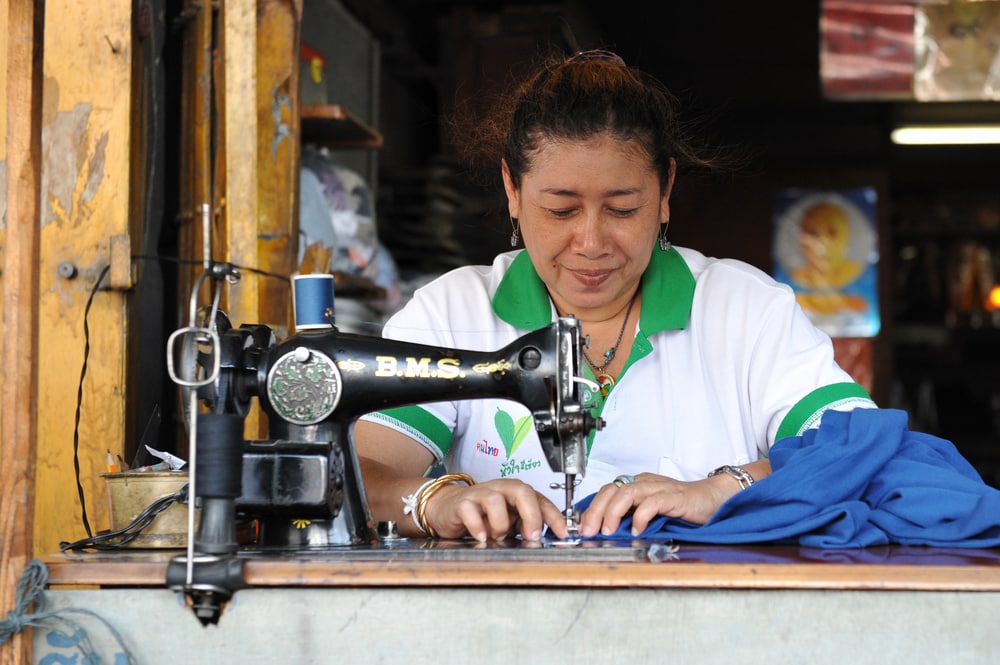Gender-based abuse has become a global problem in factories around the world. As consumers, we often have no idea what happens in the production facilities of those branded clothes we purchase. In May 2018, the Global Labor justice investigated what happens behind the scenes as the major American apparel brands launch new designs every year. H&M and Gap, for instance, outsource most of their production to Asian factories. Based on recent findings, gender-based abuse is a major issue at the production facilities of these fast-fashion brands.
What triggers this issue is the contemporary era of fast-fashion. Outsourcing, accelerated labor, and contract work is further fuelling this type of abuse. Before we dig deeper into those trends, let’s discuss the triggering force in detail.
Triggering Force of Gender-Based Abuse: The Fast-Fashion
Today’s fashion and textile industry boast of 52 micro-seasons a year. It’s no wonder that consumers are struggling to follow the fast-paced trends in the industry. Top fashion players, such as Forever 21 and H&M, get new apparel shipments every day. Zara introduces around 20,000 styles every year, while Topshop releases over 400 new designs every week. In an attempt to occupy the massive global mass market, these fast-fashion pioneers are sacrificing quality for quantity.
The Global Labor Justice (GLJ) conducted an in-depth study to investigate the implications of this trend on production. Partnering with 4 Asian NGOs, the GLJ conducted 569 interviews involving 50 apparel factories in Bangladesh, India, Sri Lanka, Cambodia, and Indonesia.
The vast majority of workers in fast-fashion supplier factories are made up of women. In Bangladesh, Indonesia, Sri Lanka, and Cambodia, they make up 80 to 95% of the garment factory workforce. Plus, males dominate the management positions and females usually work as checkers or machine operators. In other words, most of these supplier factories feature a hierarchy in which male-dominated management controls a female-majority staff.
Finally, the GLJ published 2 reports exposing the mistreatment and exploitation of Asian female garment workers in the supplier factories of Gap and H&M. Sexual harassment, physical abuse, forced overtime, and poor working conditions are a few facets of gender-based abuse in everyday factory life. Because the management is typically dominated by males in these countries, it becomes extremely difficult for female workers to report instances of such abuse. Even when they do report cases, they aren’t taken seriously by the male-dominated management. Also, disciplinary measures against abuse are hardly seen in these offshore factories.

Factors Leading to Gender-Based Abuse
According to the GLJ reports, the three underlying factors that result in the exploitation of the women workforce in the supplier factories in developing countries include:
Outsourcing Production
Fast-fashion giants such as Gap and H&M are typically headquartered in high-income countries but they aren’t directly involved in the production. Instead, they rely on the Global Production Network, that is, a system in which multiple companies in different third-world countries take care of production. Fast-fashion giants outsource production to Tier 1 companies, the supplier companies in developing countries.
Of course, the fast-fashion brands carry legal obligations for these Tier 1 companies to ensure worker protection and decent working conditions in their organizations. But the problem is that many of these Tier 1 companies don’t also produce themselves. They further subcontract the job to unregistered suppliers who run factories without government regulations. Without regulatory measures, these factories are subject to rampant worker abuse, deteriorating working conditions, the exploitation of child labor, and other types of gender-based abuse.
Since these suppliers in the bottom tiers of the production network are not affiliated with or authorized by the fast-fashion companies, these companies carry no legal obligation for them to implement worker protection measures.
Contract Work
On top of outsourcing, the issue is exacerbated by short-term contracts in supplier factories. To adapt to fluctuations in production needs derived from fast-fashion companies, contract-based work is pretty common. Temporary work status means employers can easily hire or fire workers as per their will. With a constant threat of termination, female workers are less likely to report cases related to gender-based abuse.
To make things worse, reporting abuse can backfire such that the complaining woman could be blacklisted across the industry, diminishing her future job prospects. In other words, retaliation from the employer extends beyond the boundaries of a certain workplace.
Accelerated Labor
As the fast-fashion giants keep on expanding their new-trend visions, the Global Production network is faced with outrageously high production targets. The ultimate victim is the factory worker, while everyone else remains sheltered. Because women dominate the workforce, they are the ones subject to gender-based abuse.
Workers are often overburdened with forced overtime with little or no pay. Lunch breaks, that are legal rights of all workers, are skipped. For instance, the H&M report published by the GLJ includes a testimony of a female factory worker explaining that lunch was dependent on completing urgent garment pieces.
In many cases, even drinking water or going to the restroom has been withheld by employers. As reported by an H&M supplier factory worker, the staff was not allowed to use toilets when targets were high. He explained how the work equipment would be taken away if took too long in the toilet. To get the equipment back, workers had to explain what took them so long in the toilet. On top of that, workers had to face verbal, physical and even sexual abuse if they fail to meet the production targets.
Closing Thoughts
To sum it all up, the constant cranking of new apparel trends from the fast-fashion companies tend to drive production targets that can never be met. This triggers the ever-mounting pressure on the female-dominated apparel supplier factories in developing countries. Besides, the under regulation and gender bias in these countries result in different types of gender-based abuse at workplaces.
The solution depends on collaboration between the developed and developing countries so that stringent measures against gender-based abuse in garment factories.

